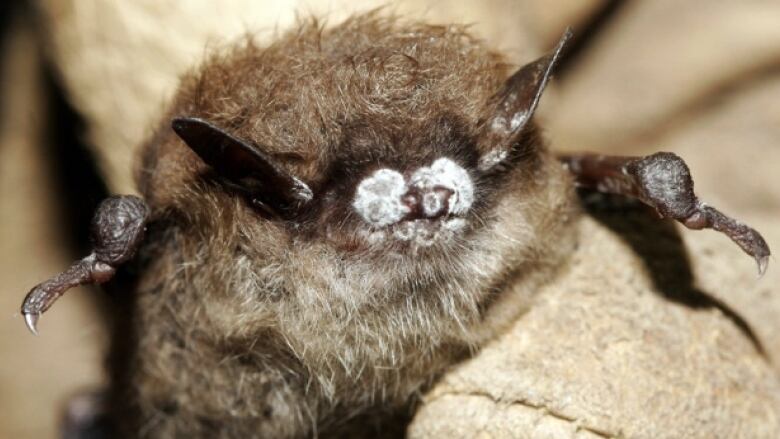Bat disease treatment a step forward, but not a cure, researcher says
Georgia researchers used white-nose fungus samples from New Brunswick Museum

The return of 75 bats to the wild in Missouri after treatment for white-nose syndrome was hailed Wednesday as a significant step in the fight against a disease that has destroyed bat populations in the province.
Researchers at Georgia State University developed the treatment using samples of the deadly fungus collected in New Brunswick. The Brattleboro Reformer newspaper in Vermont, where the disease has also taken hold,recently reported on the75 bats that were released to the wild after successful treatment.
"It's certainly a step forward, for sure," said DonMcAlpine, the research curator of the New Brunswick Museum in Saint John.
- Bat biologists in Yukon and B.C. brace for arrival of deadly white-nose syndrome
- Keep an eye out for bats in your well, say P.E.I. scientists
- Little brown bat population down to zero in some Cape Breton locations
But McAlpine cautioned that the treatment, which uses the common bacteria Rhodococcus rhodochrousto attack the fungus that causes white-nose syndrome and slow its growth, is not a cure for the disease.
The museum got involved with the project after the Georgia researchers started to look for samples of the fungus for live cultures, "and we were able to provide those," McAlpine said.
He said the treatment uses a chemical from the bacteria to attack the fungus in bats.
No immunity after treatment
But the treatment isn't a one-stop solution to white-nose syndrome in New Brunswick and does not offer immunity from the disease to a bat that has been subjected to the chemical.
"This is not a cure,"McAlpine said. "This will kill the white-nosed fungus."
The fungus remains dormant on the walls and floors of caves long after bats have died or left. Some of the disease samples sentto researchers were taken from long-dormant caves.
Easy application some distance away
McAlpinealso said that it will be a whilebeforethe technology used on the Missouri bats can be used on a grand scale.
"There's not a really easy practical application for this in the field yet," he said.
While the treatment can be considered an opening salvo against the bat disease, it will take time to bring bat populations in New Brunswick and northeastern United States back to normal levels.
"Bats are long-lived, some of them live 30, 35 years," McAlpine said. "They have very few young. Typically, the bats we're dealing with in caves here have a single young. So recovery will be a long process."
With files from Information Morning Saint John












_(720p).jpg)


 OFFICIAL HD MUSIC VIDEO.jpg)
.jpg)



























































































